Introduction
Instant noodles, a culinary invention that has transcended borders and cultures, have become a staple in kitchens worldwide. Their convenience, affordability, and versatility make them a go-to meal for busy individuals, college students, and even gourmet enthusiasts experimenting with quick recipes. Among the myriad ways to prepare instant noodles—boiling, microwaving, or baking—stir-frying stands out as a method that elevates this humble dish into a flavorful, texturally satisfying meal. However, a common dilemma persists among both novice cooks and seasoned home chefs: When is the optimal moment to add the seasoning packet during the stir-frying process? This article delves into the science, techniques, and cultural nuances surrounding this question, offering a comprehensive guide to achieving perfectly seasoned stir-fried instant noodles every time.
The Rise of Stir-Fried Instant Noodles
Stir-frying, a cooking technique rooted in Asian cuisine, involves rapidly cooking ingredients in a hot pan with a small amount of oil. When applied to instant noodles, this method transforms the soft, bland strands into a crispy, aromatic dish. The process typically involves three stages: parboiling the noodles, stir-frying them with vegetables, proteins, and aromatics, and finally, seasoning. Yet, the timing of seasoning addition remains a topic of debate. Some advocates swear by adding the seasoning packet early to infuse the noodles with flavor, while others argue that late addition prevents burning and preserves the seasoning’s potency. To resolve this, we must explore the chemistry of seasoning, the physics of heat, and the art of flavor layering.
The Anatomy of a Seasoning Packet
Instant noodle seasoning packets are engineered for convenience, blending salt, sugar, monosodium glutamate (MSG), hydrolyzed vegetable protein, yeast extracts, and artificial or natural flavorings. These components serve distinct purposes: salt enhances flavor, MSG amplifies umami, and sugars balance acidity. Dehydrated vegetables, herbs, or spices may also be included, adding texture and visual appeal. The key challenge lies in dissolving these powders evenly without clumping, a risk that escalates when exposed to high heat or moisture.
The Science of Flavor Absorption
Flavor absorption in cooking is governed by two principles: osmosis and the Maillard reaction. Osmosis dictates how seasonings penetrate the noodles’ surface, while the Maillard reaction—a chemical interaction between amino acids and reducing sugars—creates complex flavors through browning. When seasoning is added too early, the high heat of stir-frying can cause the powders to caramelize or burn before the noodles fully absorb them. Conversely, adding seasoning too late results in superficial flavor that sits on the noodles’ surface rather than integrating into their structure.

Timing Strategies: Early vs. Late Addition
-
Early Addition (During Stir-Frying)
Advocates of early seasoning addition argue that high heat activates the seasoning’s aromatic compounds, intensifying the dish’s overall taste. By sprinkling the seasoning into the pan while stir-frying vegetables or proteins, cooks can create a flavorful base that coats the noodles as they cook. However, this method requires careful monitoring to prevent scorching.Pros:
- Enhanced caramelization of sugars and proteins.
- Even distribution of flavor throughout the dish.
Cons:
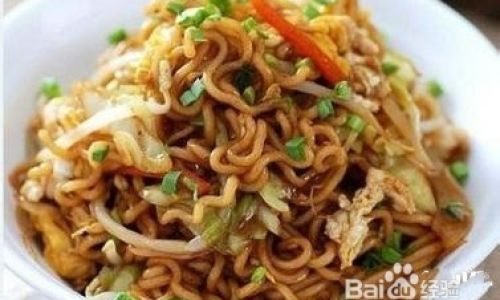
- Risk of seasoning burning if the pan is too hot.
- Reduced control over saltiness, as flavors concentrate during cooking.
-
Late Addition (After Noodles Are Cooked)
Those who prefer adding seasoning after parboiling and draining the noodles claim this preserves the seasoning’s freshness and prevents clumping. By tossing the noodles with the seasoning packet off the heat, cooks can adjust the flavor intensity without guesswork.Pros:
- Greater control over seasoning levels.
- Reduced risk of burning or over-salting.
Cons:
- Less integration of flavors into the noodles.
- Potential for uneven seasoning distribution.
The Compromise: Split Seasoning
A hybrid approach involves dividing the seasoning packet into two portions: one added during stir-frying to build flavor depth, and the other tossed with the cooked noodles for a final flavor boost. This method balances complexity and control, catering to both flavor purists and cautious cooks.
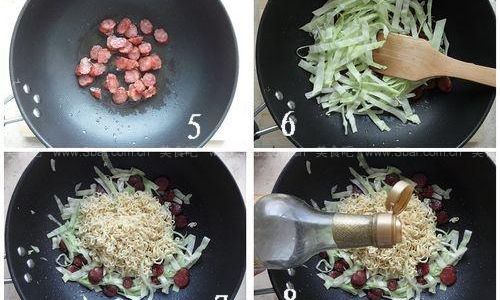
Ingredient Synergy: How Add-Ins Influence Timing
The choice of accompanying ingredients—vegetables, proteins, or sauces—significantly impacts seasoning timing. For example:
- Vegetables: Water-rich vegetables like bell peppers or cabbage release moisture during stir-frying, which can dilute seasoning. Adding the seasoning packet after vegetables have softened ensures flavors remain vibrant.
- Proteins: Meats or tofu benefit from early seasoning, as the salts and sugars in the packet can aid browning and tenderness.
- Aromatics: Garlic, ginger, or onions should be stir-fried first to release their oils; seasoning added afterward complements their natural flavors.
Cultural Perspectives
In East Asia, where instant noodles originated, stir-frying techniques vary by region. For instance:
- China: Cooks often add seasoning packets mid-stir-fry, combining them with soy sauce, oyster sauce, or chili oil for a multi-layered taste.
- Japan: Dishes like yakisoba typically use a proprietary sauce applied after noodles are parboiled, ensuring a glossy finish.
- Korea: Ramyeon stir-fries may incorporate gochujang (fermented chili paste) added late to preserve its spicy kick.
These regional preferences highlight that timing is not universal but adaptable to desired outcomes.
Troubleshooting Common Issues

- Clumping: To prevent seasoning from clumping, ensure the pan is adequately heated and the noodles are well-drained before adding the packet.
- Overly Salty Dishes: If the seasoning packet is added too early, its salts concentrate as moisture evaporates. Mitigate this by reserving a portion of the seasoning for final tossing.
- Bland Flavor: Late addition may result in under-seasoning. Taste-test frequently and adjust with additional soy sauce or spices.
Advanced Techniques for Enthusiasts
For those seeking to elevate their stir-fried instant noodles, consider these tips:
- Toast the Seasoning: Briefly dry-toasting the seasoning packet in a hot pan before adding oil and noodles can amplify its aroma.
- Infuse Oils: Mix the seasoning powder with sesame or chili oil before stir-frying for a richer flavor base.
- Layer Flavors: Introduce complementary ingredients like lime zest, herbs, or cheese after cooking to add freshness without diluting the seasoning.
The Role of Heat Control
Stove temperature plays a pivotal role in seasoning timing. High heat is ideal for early addition, as it rapidly caramelizes sugars and proteins. However, medium heat allows for gentler flavor integration, reducing the risk of burning. Electric vs. gas stoves may also affect cooking times; gas stoves’ instant heat adjustment offers more precision.
Nutritional Considerations
While instant noodles are often criticized for their sodium content, adjusting seasoning timing can mitigate this. Adding half the packet early and reserving the rest for post-cooking allows cooks to control salt intake without sacrificing flavor. Alternatively, substituting part of the seasoning with fresh herbs, garlic, or ginger reduces reliance on processed flavorings.
Step-by-Step Guide to Perfectly Seasoned Stir-Fried Noodles

- Parboil the Noodles: Cook noodles in boiling water for 2–3 minutes, until slightly underdone. Drain and rinse under cold water to halt cooking.
- Prepare Ingredients: Slice vegetables, marinate proteins, and mince aromatics.
- Heat the Pan: Add oil to a wok or skillet over high heat.
- Stir-Fry Aromatics: Add garlic, ginger, or onions; stir-fry until fragrant.
- Cook Proteins and Vegetables: Add proteins first, followed by vegetables. Stir-fry until cooked.
- Add Noodles: Toss the parboiled noodles into the pan.
- Seasoning Timing Decision:
- Early Addition: Sprinkle half the seasoning packet now; stir-fry for 1–2 minutes.
- Late Addition: Proceed to step 8.
- Final Toss: Remove pan from heat. Toss noodles with remaining seasoning (if split) or the entire packet.
- Adjust and Serve: Taste and add soy sauce, vinegar, or herbs as needed. Serve immediately.
Conclusion
The question of when to add the seasoning packet to stir-fried instant noodles is more than a culinary query—it is a gateway to understanding flavor dynamics, heat management, and personal preference. Whether you opt for early addition to harness the Maillard reaction, late addition to preserve freshness, or a split-seasoning compromise, the key lies in experimentation and attention to detail. By considering ingredient synergy, cultural traditions, and nutritional goals, you can transform a simple packet of instant noodles into a dish that delights the senses and reflects your culinary prowess. The next time you stand before a sizzling wok, remember: timing is not just a step—it is the secret ingredient.

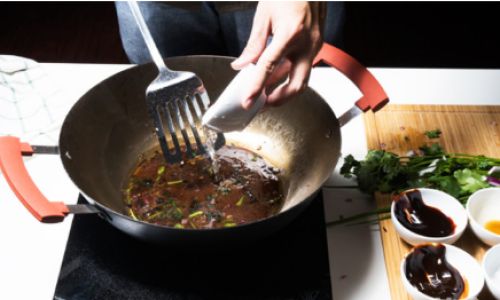

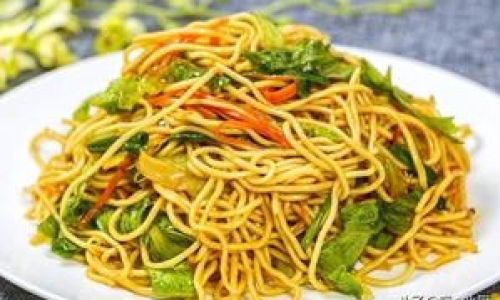
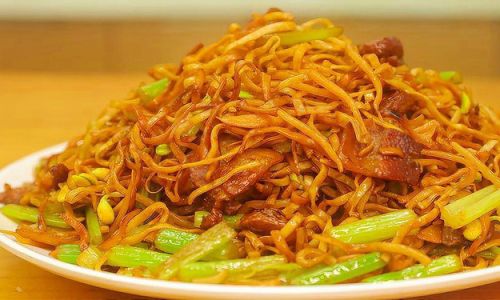
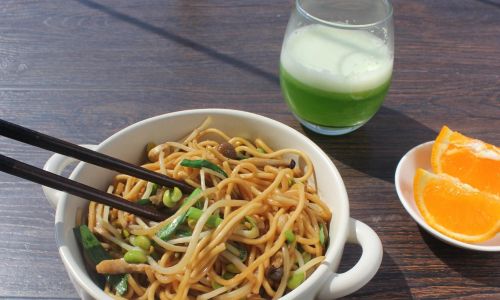
0 comments